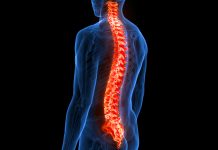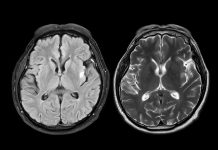UKHSA has published new insight into health inequalities caused by infectious diseases and environmental health hazards
The Health Inequalities in Health Protection report outlines a high-level summary of the current health inequalities in England caused by infectious diseases and environmental health hazards. The analysis uses hospital admissions as a measure of infectious disease levels.
Infectious disease hospitalisations are 30% higher in the North-West
The analysis revealed that people living in the 20% most deprived areas in England are almost twice as likely to be admitted to hospital due to infectious diseases than the least deprived.
Furthermore, those living in the North-West are 30% more likely to be hospitalised for an infectious disease (3,600 per 100,000 admissions for Sept 23-Aug 24), compared to the England average (2,800 per 100,000).
The research provided insight into how inequality varies between ethnic groups. For example, emergency admission rates for tuberculosis were 29 times higher for ‘Asian other ‘, 27 times higher for ‘Indian’, and 15 times higher for ‘Black African’, compared to ‘White British’. It was also estimated that inequalities in emergency infectious disease hospital admissions cost the NHS between £970 million and £1.5 billion in 2022-23.
Regarding environmental health, the researchers found that areas of high levels of deprivation typically experience higher levels of air pollution than less deprived and less ethnically diverse areas.
The impact of deprivation on infectious diseases and environmental health hazards
The research showed that people living in deprived communities experience higher emergency hospital admission rates compared to the least deprived communities.
The data showed that the prevalence was twice as high for respiratory diseases in general and up to seven times higher specifically for tuberculosis and six times higher for measles. It was also twice as high for invasive infections in general, up to 2.5 times higher specifically for sepsis, and 1.7 times higher for gastrointestinal diseases.
People from more deprived areas are also disproportionately impacted by radiation, chemical, climate and environmental hazards through their exposure, direct impact on their health, and the exacerbation of existing health conditions. Areas with high levels of deprivation typically have higher levels of air pollution than less deprived and less ethnically diverse regions.
Dr Leonora Weil, Deputy Director for Health Equity and Inclusion at UKHSA said: “The report reveals some stark facts on the state of inequalities in health security faced by some people, in particular those living in the most deprived communities and certain areas of the country, some ethnic groups, as well as excluded groups such as those experiencing homelessness.
These health protection inequalities – where there are poorer health outcomes based on where you live, your socio-economic status or ethnicity are avoidable, pervasive, and preventable. That is why it is so important to highlight these findings to increase action to support communities to live longer and in better health.
Going forward, our data and analysis of the evidence will help us and our partners apply a health equity lens to all our health security work to inform how we better target effective health services and wider interventions to those most in need.
This report is just the start. We need to build on these insights, as only through persistent and dedicated effort across all health organisations will we make a real difference to helping all people live longer and in better health.”
UKHSA aims to reduce health inequalities
The UKHSA approach to reducing health inequalities resulting from infectious diseases and environmental health hazards involves:
- Building our understanding of the people and places that experience these inequalities.
- Taking a ‘people and place’ approach, working with local and national systems to support integrated, tailored and accessible interventions that better meet the needs of different communities and groups.
- Working in partnership across national and local government, the NHS, the voluntary, faith, and charity sectors, and communities themselves.
- Equipping the UKHSA workforce with the capacity and capability to address inequalities in health protection in everything we do.








